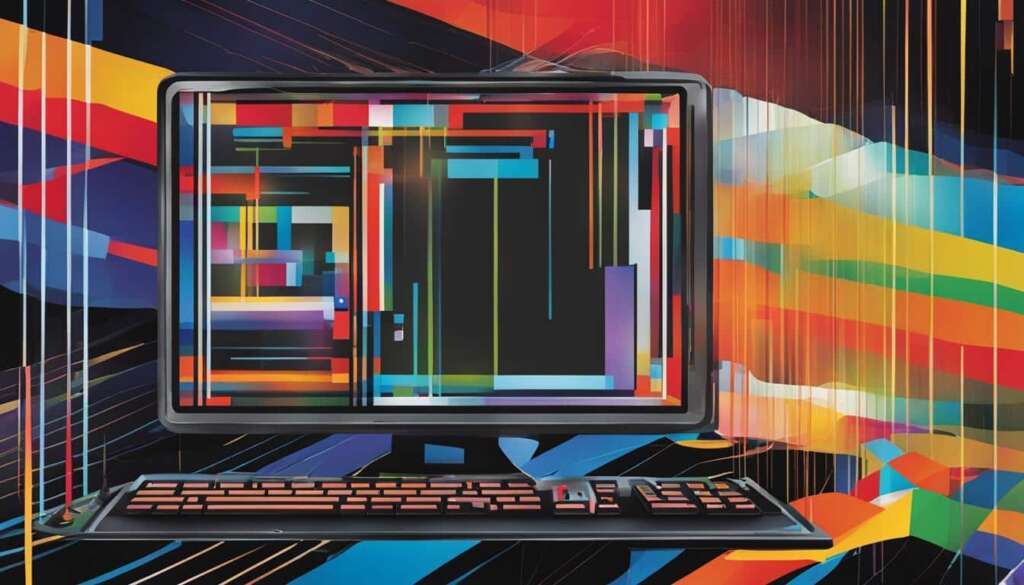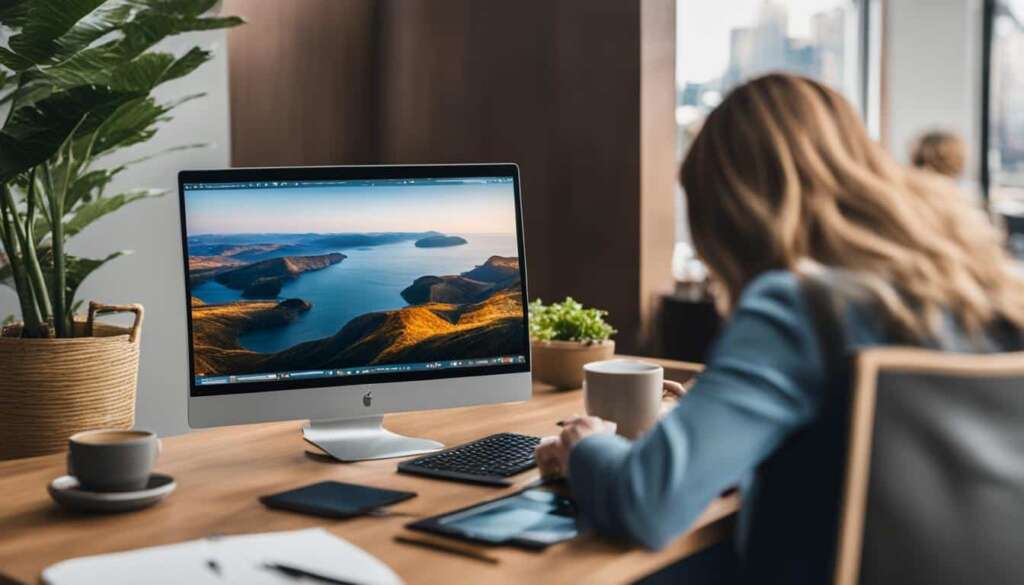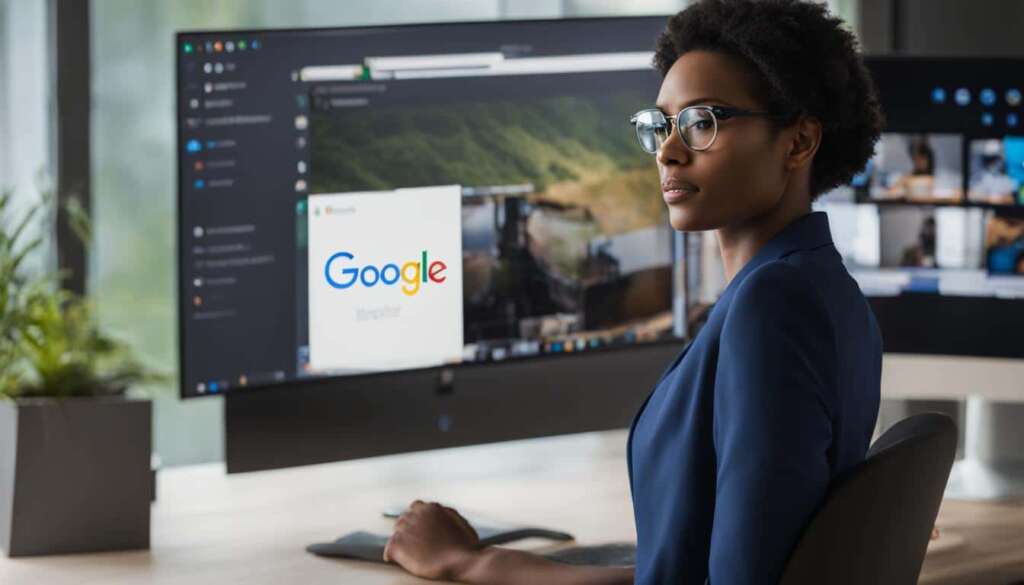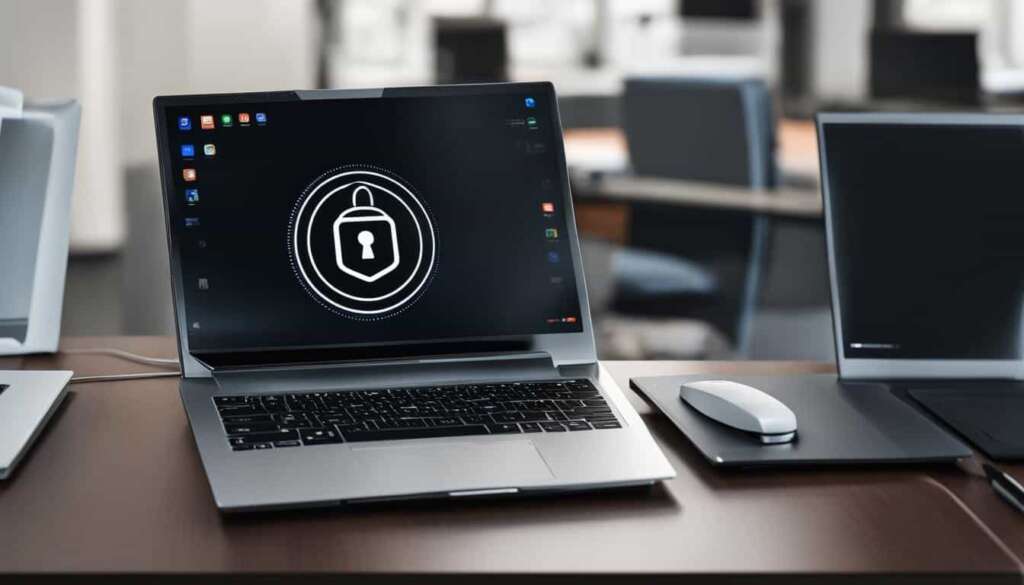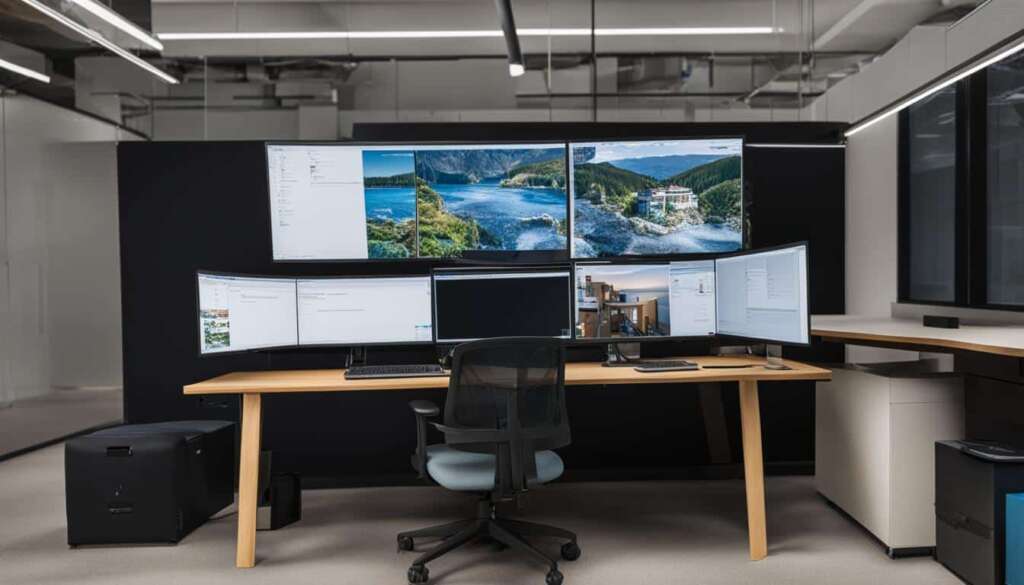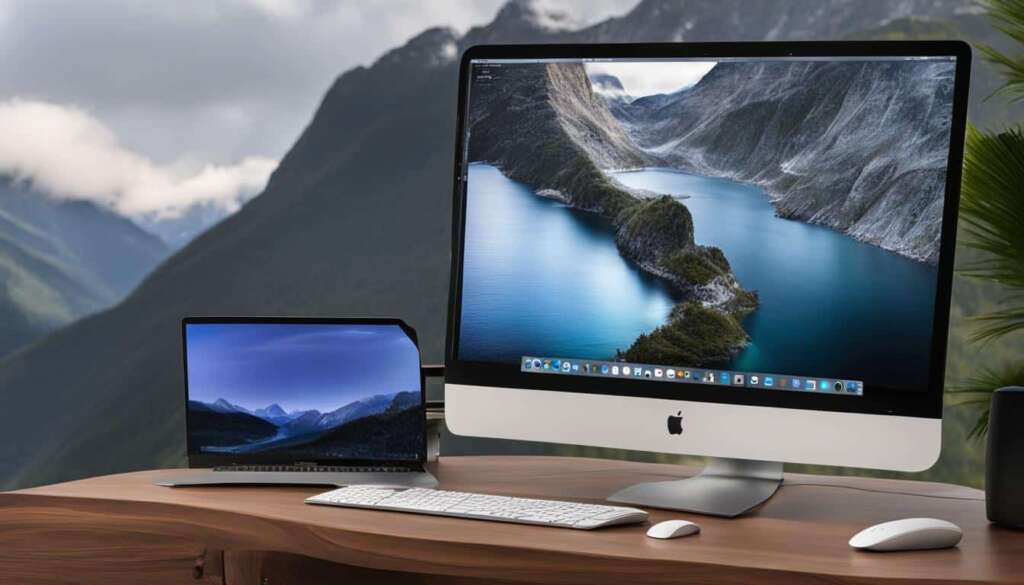Table of Contents
Welcome to our comprehensive guide on Microsoft Remote Desktop. If you’re looking for a seamless way to access your Windows computer remotely, you’ve come to the right place. Whether you’re working from home, on the go, or simply need to access files and applications from a different location, Microsoft Remote Desktop offers a convenient solution.
With Microsoft Remote Desktop software, you can effortlessly connect to your work or home computer as if you were sitting right in front of it. Say goodbye to the limitations of physical presence and embrace the freedom and flexibility that remote desktop offers. By following our step-by-step instructions, you can set up and use Microsoft Remote Desktop with ease.
In this guide, we’ll cover everything you need to know about accessing remote desktop on Windows. From setting up Remote Desktop using Remote.It to understanding its practical applications across various industries, we have you covered. We’ll also highlight the advantages of Microsoft Remote Desktop, enabling you to make an informed decision about incorporating it into your workflow.
So, whether you’re a remote worker, an IT professional, a developer, or anyone in need of seamless remote access, let’s dive into the world of Microsoft Remote Desktop and unlock the possibilities it offers.
How to Set Up Remote Desktop Using Remote.It
For seamless remote desktop setup and network configuration, Remote.It is a powerful tool that eliminates the need for manual network settings. It not only simplifies the process but also enhances security. Here’s a step-by-step guide to setting up remote desktop using Remote.It:
Step 1: Enable Remote Desktop on the Target Windows PC
To begin, make sure Remote Desktop is enabled on the Windows PC you want to access remotely. This can be done through the Windows settings by following these steps:
- Open the Start menu and search for “Remote Desktop Settings.”
- Click on “Remote Desktop Settings” from the search results.
- In the Remote Desktop settings window, toggle the switch to enable Remote Desktop.
- Make a note of the PC name as you will need it for the connection later.
Step 2: Install RemoteIt Software
Next, you’ll need to install the RemoteIt software on both the target PC and the remote computer that you’ll be using to connect. Follow these steps to install the software:
- Download the RemoteIt software from the official website and run the installation file.
- Follow the on-screen instructions to complete the installation process on both the target PC and the remote computer.
Step 3: Initiate the Connection
Once you have enabled Remote Desktop and installed the RemoteIt software, it’s time to initiate the connection. You can do this either through the RemoteIt application or the Microsoft Remote Desktop client. Here’s how:
- Launch the RemoteIt application on the remote computer or open the Microsoft Remote Desktop client.
- Enter the PC name or IP address of the target Windows PC you want to connect to.
- Provide the necessary credentials, including the username and password for the target PC.
- Click on the “Connect” button to establish the remote desktop connection.
By following these steps, you can easily set up Remote Desktop using Remote.It. Enjoy the convenience of accessing your Windows PC remotely and harness the power of seamless remote desktop connectivity.
Practical Applications of Microsoft Remote Desktop
Microsoft Remote Desktop offers a wide range of practical applications across various industries, making it an invaluable tool for businesses and professionals alike. Let’s explore some of the key areas where Remote Desktop brings immense value:
1. Remote Work and Telecommuting
With the rise of remote work, Microsoft Remote Desktop enables employees to seamlessly access their office computers from the comfort of their homes. It provides a secure and efficient way to connect to work resources, ensuring productivity and collaboration are not compromised even when working remotely.
2. IT Support and Troubleshooting
IT professionals rely on Remote Desktop to provide efficient support and troubleshooting to users. By remotely accessing the user’s computer, IT technicians can diagnose and resolve issues in real-time, saving time and reducing the need for physical interventions.
3. Software Development and Testing
Developers leverage Remote Desktop to access remote machines and test their software applications on different environments. This allows for efficient debugging, compatibility testing, and ensuring the software performs optimally across various setups.
4. Server Management
System administrators use Remote Desktop to manage and maintain servers without needing physical access to them. This makes server configuration, updates, and monitoring tasks more streamlined and convenient.
5. Collaborative Projects
Remote Desktop facilitates collaborative projects by enabling multiple users to work on the same resources simultaneously. Team members can securely access shared files, collaborate in real-time, and contribute to projects from different locations.
6. Training and Education
Remote Desktop is an effective tool for delivering training and education remotely. It allows trainers to access learners’ computers, provide demonstrations, and offer hands-on guidance, creating an interactive and engaging learning experience.
7. Access to Specialized Software
Remote Desktop grants users access to specialized software applications installed on remote machines. This is particularly beneficial for professionals working with resource-intensive applications or software that is not available on their local devices.
8. Business Continuity
In the face of unexpected disruptions, such as natural disasters or emergencies, Remote Desktop ensures business continuity. Employees can quickly switch to remote work, accessing their office resources and continuing operations without interruptions.
9. Monitoring and Reporting
Remote Desktop enables the monitoring and reporting of remote computers and servers. IT administrators can track performance metrics, identify potential issues, and generate comprehensive reports for analysis and optimization purposes.
10. IoT Device Management
Remote Desktop can be utilized to manage and control IoT devices remotely. This allows for efficient monitoring, configuration, and maintenance of IoT infrastructure, ensuring smooth operation and enhanced functionality.
By leveraging the power of Microsoft Remote Desktop, businesses and individuals can unlock new possibilities, enhance productivity, and overcome geographical barriers. The applications mentioned above are just a glimpse of the vast potential for utilizing Remote Desktop in various professional scenarios.
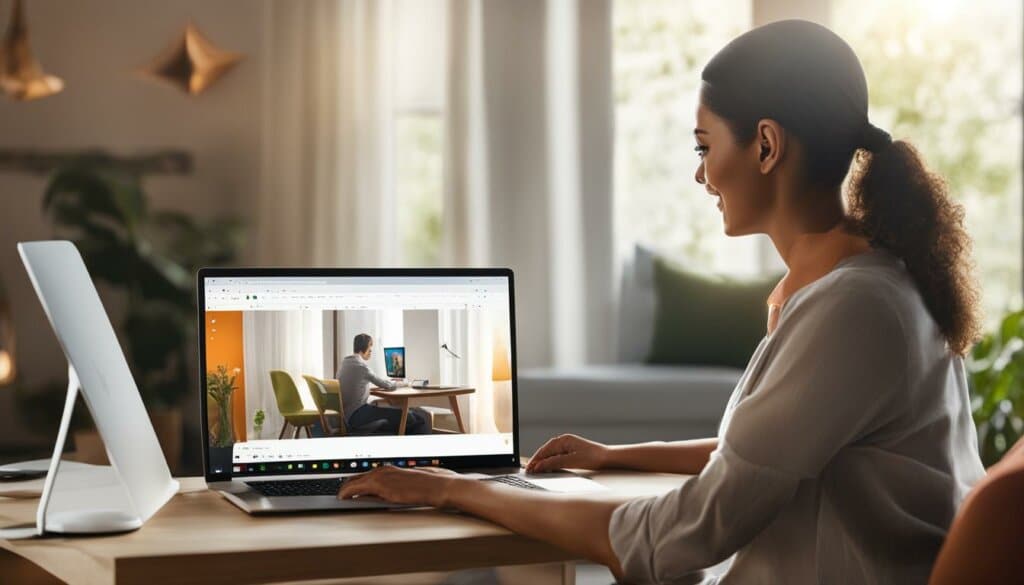
Advantages of Microsoft Remote Desktop
Using Microsoft Remote Desktop offers several advantages, making it a valuable tool for remote access and efficient workflow management.
Simplified Remote Access
With Microsoft Remote Desktop, users can connect to their work or home computers from anywhere with an internet connection. This enables seamless remote access, allowing individuals to stay connected and productive while on the go, without the need for physical presence.
Cost-Effectiveness
Microsoft Remote Desktop eliminates the need for multiple workstations, reducing hardware and maintenance costs. Users can access their desktops and applications remotely, saving money on additional computer equipment and ensuring efficient resource utilization.
Centralized Data Management
By using Microsoft Remote Desktop, organizations can centralize their data management, making it easier to access and secure files and applications. Files and software are stored securely on the remote desktop, minimizing the risk of data loss or security breaches.
Enhanced Collaboration
Microsoft Remote Desktop promotes enhanced collaboration among teams. Remote team members can access shared files and resources, enabling seamless collaboration on projects regardless of geographical location. This improves communication, productivity, and teamwork.
Application Compatibility
Microsoft Remote Desktop ensures compatibility with a wide range of applications, allowing users to run software remotely without compatibility issues. This enables businesses to seamlessly transition to remote work without worrying about application compatibility constraints.
Business Continuity
In times of disruptions such as natural disasters or health emergencies, Microsoft Remote Desktop provides an essential solution for business continuity. Employees can continue working remotely, ensuring uninterrupted operations and maintaining productivity levels.
Security
Microsoft Remote Desktop offers robust security measures, including encryption and secure authentication, to protect sensitive data and prevent unauthorized access. This ensures that remote connections are secure, safeguarding valuable information and maintaining data integrity.
Streamlined IT Management
Remote Desktop streamlines IT management by providing centralized control and administration of desktops and applications. IT professionals can easily deploy updates, manage user permissions, and troubleshoot issues from a single interface, saving time and resources.
Developer and IT Use Cases
Microsoft Remote Desktop caters to the needs of developers and IT professionals. Developers can use Remote Desktop for software development, testing, and debugging, while IT professionals can leverage it for technical support and server management. These use cases enhance efficiency and productivity in both roles.
IoT and Specialized Device Management
Microsoft Remote Desktop can also be used to manage and monitor IoT devices and specialized equipment. It provides a centralized platform to oversee and control these devices, ensuring smooth operation, maintenance, and updates.
| Advantage | Description |
|---|---|
| Simplified Remote Access | Connect to work or home computers from anywhere with an internet connection. |
| Cost-Effectiveness | Eliminate the need for multiple workstations and reduce hardware costs. |
| Centralized Data Management | Easily manage and secure files and applications in a centralized location. |
| Enhanced Collaboration | Enable seamless collaboration on projects regardless of geographical location. |
| Application Compatibility | Run software remotely without compatibility issues. |
| Business Continuity | Continue operations and maintain productivity during disruptions. |
| Security | Protect sensitive data with encryption and secure authentication. |
| Streamlined IT Management | Efficiently manage desktops and applications from a centralized interface. |
| Developer and IT Use Cases | Support software development, testing, technical support, and server management. |
| IoT and Specialized Device Management | Manage and monitor IoT devices and specialized equipment. |
Understanding Remote Desktop
Remote Desktop is a program that allows remote access to a computer without physical interaction. This powerful tool enables users to connect to their computers from anywhere in the world, providing flexibility and convenience. The concept of Remote Desktop revolves around the client-server mode, where the remote PC acts as the server and the device connecting to it acts as the client.
One popular option for remote desktop access is the Windows built-in Remote Desktop program. As the name suggests, this program comes pre-installed on Windows computers, making it easily accessible for users. However, it’s important to note that not all Windows versions support Remote Desktop by default, and in such cases, it needs to be manually enabled.
By enabling remote desktop, users can allow connections from other computers, creating a network of interconnected devices. This functionality opens up a world of possibilities, from accessing important files and documents to remotely assisting colleagues or clients.
To better understand the concept of Remote Desktop, let’s take a look at a visual representation:
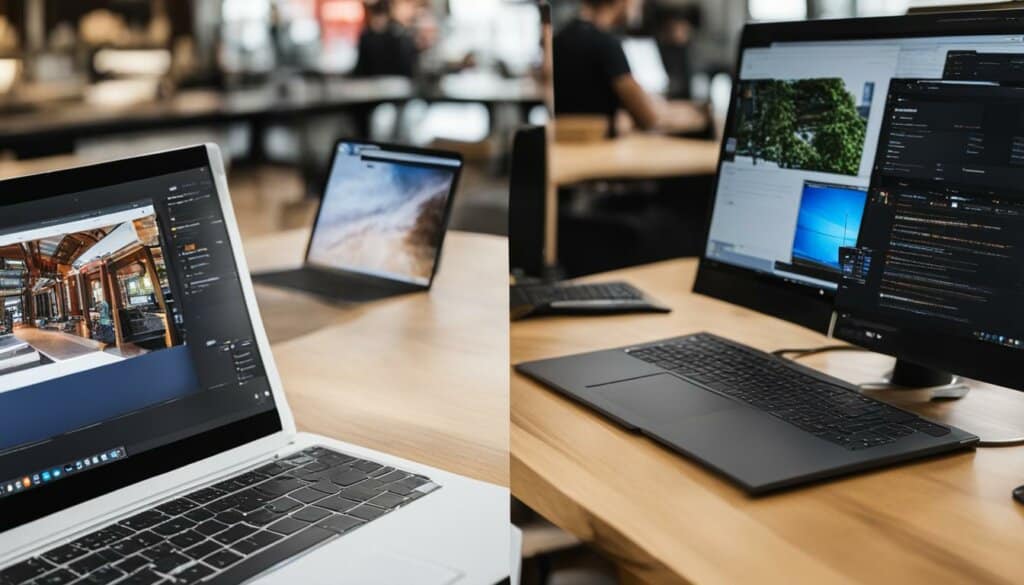
Key Features of Remote Desktop
| Remote Desktop Program | Client-Server Mode | Windows Built-in Remote Desktop | Enable Remote Desktop | Allow Connections from Computers |
|---|---|---|---|---|
| Allows remote access to a computer | The remote PC acts as the server, while the connecting device acts as the client | Windows operating systems come equipped with a built-in Remote Desktop program | Remote Desktop may need to be manually enabled on some Windows versions | Enables connections from other computers for seamless access |
As you can see, Remote Desktop provides a secure and efficient way to access a computer remotely. Whether you’re working from home, collaborating with colleagues, or providing technical support, Remote Desktop offers a reliable solution for seamless connectivity.
How to Enable Remote Desktop on Windows 10 and 11
If you want to enable Remote Desktop on your Windows 10 or 11 PC, you have multiple options at your disposal. You can utilize the Command Prompt (CMD), Registry Editor, PowerShell, Windows Settings, or System Properties. Each method offers a unique approach to enable Remote Desktop, allowing you to choose the most convenient option for your needs.
Let’s explore each method in detail:
- Command Prompt (CMD): Using the Command Prompt, you can execute specific commands to enable Remote Desktop. This method requires the use of command-line instructions to modify system settings. It provides a direct and efficient approach for enabling Remote Desktop on your Windows PC.
- Registry Editor: The Registry Editor allows you to modify registry entries, which control various aspects of your system’s behavior. By navigating to the appropriate registry keys and making the necessary changes, you can enable Remote Desktop on your Windows PC.
- PowerShell: PowerShell is a powerful scripting language designed for system administration tasks. With PowerShell, you can run scripts that automate the process of enabling Remote Desktop. This method is particularly useful if you want to enable Remote Desktop on multiple computers simultaneously.
- Windows Settings: Windows Settings provides a user-friendly interface for modifying various system settings. By navigating to the Remote Desktop settings in Windows Settings, you can enable Remote Desktop with just a few clicks. This method is ideal for users who prefer a graphical approach to system configuration.
- System Properties: System Properties is another graphical interface for managing system settings. By accessing the Remote tab in System Properties, you can enable Remote Desktop and configure additional settings, such as allowing connections from specific computers.
It is crucial to carefully follow the instructions for each method to ensure successful enablement of Remote Desktop on your Windows 10 or 11 PC. Choose the method that aligns with your preferences and technical expertise to enjoy the benefits of seamless remote access.
| Method | Pros | Cons |
|---|---|---|
| Command Prompt (CMD) | Direct and efficient | Requires command-line knowledge |
| Registry Editor | Allows precise control over system settings | Requires careful modification of registry entries |
| PowerShell | Scripting capabilities for automation | Requires scripting knowledge |
| Windows Settings | User-friendly interface | May not provide advanced customization options |
| System Properties | Graphical interface for configuration | May require additional configuration for specific connections |
How to Connect to Windows with Remote Desktop Client
Once Remote Desktop is enabled on the target Windows PC, you can connect to it using a Remote Desktop client. The client software, such as Remote Desktop Connection, requires the IP address or computer name of the remote PC, as well as the username and password for authentication. Detailed steps for connecting to Windows using the Remote Desktop client should be followed, including the necessary network configuration for successful remote connections.
To connect to a Windows PC using Remote Desktop Connection, follow these steps:
- Launch the Remote Desktop Connection software on your device.
- In the “Computer” field, enter the IP address or computer name of the remote PC.
- Click on the “Show Options” button to expand the additional settings.
- Enter your username and password for the remote PC.
- Configure any other desired settings, such as display options or local resources.
- Click on the “Connect” button to initiate the remote desktop session.
Once connected, you will be able to interact with the remote Windows PC as if you were physically present in front of it. You can work on files, run applications, and perform various tasks seamlessly.
It is important to ensure that the network configuration, including firewalls and port forwarding, is properly set up to allow for successful remote connections. Consult the appropriate network administrator or IT personnel for assistance if needed.
| Connecting to Windows with Remote Desktop Client |
|---|
Seamless Remote Desktop Access Made Easy
Microsoft Remote Desktop offers a seamless and convenient solution for accessing your remote PCs. Whether you’re working from home, travelling, or simply need to access your computer from a different location, Remote Desktop provides a hassle-free experience. With our comprehensive guide, we’ve covered everything you need to know about setting up Microsoft Remote Desktop, exploring its practical applications, benefits, and connection methods.
By following our step-by-step instructions, you can easily configure Microsoft Remote Desktop and establish a secure connection to your remote PC. Enjoy the freedom to work from anywhere with ease, experiencing the same productivity and flexibility as if you were sitting in front of your actual computer. Whether you’re a remote worker, IT professional, developer, or simply need to access specialized software or files, Microsoft Remote Desktop empowers you to stay connected and efficient.
Unlock the full potential of remote access with our comprehensive guide to Microsoft Remote Desktop. Seamlessly navigate through the setup process, explore the multitude of practical applications, and leverage the advantages it offers. Say goodbye to geographical limitations and embrace a new era of remote productivity. Start your journey with our remote desktop guide today and discover the freedom and convenience of seamless access to your remote PCs.
FAQ
What is Microsoft Remote Desktop?
Microsoft Remote Desktop is a standard solution for accessing a computer remotely. It allows users to access their work or home computers from anywhere, providing a seamless experience that feels like sitting in front of the actual computer.
How can I set up Remote Desktop using Remote.It?
To set up Remote Desktop using Remote.It, you need to enable Remote Desktop on the target Windows PC, install RemoteIt software on both the target PC and the remote computer, and initiate the connection using the RemoteIt application or the Microsoft Remote Desktop client.
What are the practical applications of Microsoft Remote Desktop?
Microsoft Remote Desktop has various everyday use cases across different industries. It enables remote work and telecommuting, allows IT professionals to provide technical support and troubleshooting, helps developers with software development and testing, assists system administrators in managing servers, supports collaborative projects and training, allows access to specialized software, ensures business continuity, aids in monitoring and reporting, and facilitates IoT device management.
What are the advantages of using Microsoft Remote Desktop?
Using Microsoft Remote Desktop offers several benefits. It provides simplified remote access, eliminates the need for multiple workstations, centralizes data management for easier file and application security, enhances collaboration, ensures application compatibility, supports business continuity, streamlines IT management, and provides valuable use cases for developers and IT professionals. Remote Desktop can also be used to manage and monitor IoT devices.
What is Remote Desktop and how does it work?
Remote Desktop is a program that allows remote access to a computer without physical interaction. The remote PC acts as the server, while the device connecting to it acts as the client. The Windows built-in Remote Desktop is one such program.
How can I enable Remote Desktop on Windows 10 and 11?
There are multiple ways to enable Remote Desktop on Windows 10 and 11. You can use the Command Prompt (CMD), Registry Editor, PowerShell, Windows Settings, or System Properties. Each method involves different steps, such as running specific commands, modifying registry entries, or changing settings through the user interface.
How can I connect to Windows using the Remote Desktop client?
Once Remote Desktop is enabled on the target Windows PC, you can connect to it using a Remote Desktop client. The client software, such as Remote Desktop Connection, requires the IP address or computer name of the remote PC, as well as the username and password for authentication. Follow the detailed connection steps, including necessary network configuration, for successful remote connections.
How does Microsoft Remote Desktop provide seamless access to remote PCs?
Microsoft Remote Desktop provides a seamless and convenient way to access remote PCs. By following the setup process and leveraging the features of Remote Desktop, users can enjoy effortless remote access to their computers for enhanced productivity and flexibility.

